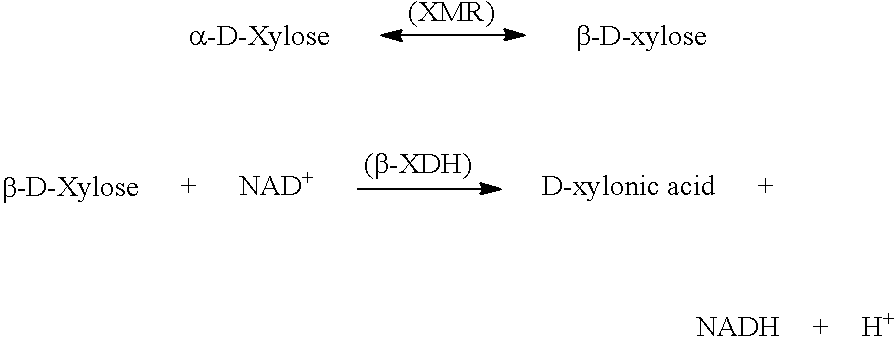Polypeptides having Xylanase Activity and Polynucleotides Encoding Same
- Summary
- Abstract
- Description
- Claims
- Application Information
AI Technical Summary
Benefits of technology
Problems solved by technology
Method used
Image
Examples
example 1
f GH5 Xylanases
[1051]Codon optimized synthetic genes based on the nucleotide sequences SEQ ID NO: 13, 77, 119 and 125 were synthesized and purchased commercially. For the Paenibacillus species (SEQ ID NO: 1, 7, 65, 71, 83, 89, 95, 101, 107, 113), the Chryseobacterium species (SEQ ID NO: 25) as well as the elephant genome sequences SEQ ID NO: 31, 37 and 43, the wild type sequences were cloned.
[1052]The xylanases were cloned into a Bacillus expression vector as described in WO 12 / 025577. The DNA encoding the mature xylanase peptide were cloned in frame to a Bacillus clausii secretion signal (BcSP; with the following amino acid sequence: MKKPLGKIVASTALLISVAFSSSIASA (SEQ ID NO: 22), originating from the protease AprH of B. clausii). BcSP replaced all native secretion signals respectively in all genes.
[1053]Downstream of the BcSP sequence an affinity tag sequence was introduced to ease the purification process (His-tag; with the following amino acid sequence: HHHHHHPR (SEQ ID NO: 23) for...
example 2
ion of GH5 Xylanases
[1056]All His-tagged enzymes were purified by immobilized metal chromatography (IMAC) using Ni2+ as the metal ion on 5 mL HisTrap Excel columns (GE Healthcare Life Sciences). The purification took place at pH 8 and the bound proteins were eluted with 50 mM HEPES, pH7.0 and 0.75 M imidazole. Subsequently, the enzyme sample was desalted by loading onto a Sephadex™ G-25 (medium) (GE Healthcare, Piscataway, N.J., USA) column equilibrated in 50 mM HEPES pH 7.0, 100 mM NaCl and eluting with the same buffer. The purity of the purified enzymes was checked by SDS-PAGE and the concentration of each enzyme determined by Abs 280 nm after a buffer exchange.
example 3
nt of Soluble and Insoluble Dietary Fiber in the Substrate Defatted De-Starched Maize (DFDSM) and Correlation to Soluble Xylose Measured after Enzymatic Incubation
[1057]400 mg of defatted de-starched maize (DFDSM) was added to NaOAc-buffer (5 mL, pH 5). The mixture was heated to between 90-100° C., then Termamyl 300 DX (100 μL, Novozymes NS, Bagsvaerd, Denmark) was added and the mixture was incubated for 1 hr. The mixture was then cooled and amyloglucosidase from Aspergillus niger (500 μL, catalogue number E-AMGDF, for use in Megazyme Total Starch and Dietary Fiber, Megazyme International Ireland, Wicklow, Ireland) was added and samples were incubated overnight (16 h) at 60° C. The mixture was then cooled and centrifuged at 2500×g for 10 min at 5° C. The supernatant was collected and NaOAc-buffer (5 mL, pH 5) was added to the residue and centrifuged at 2500×g, 10 min, 5° C. This procedure was repeated twice. The supernatants were then collected, pooled and analysed for soluble NSP a...
PUM
| Property | Measurement | Unit |
|---|---|---|
| Temperature | aaaaa | aaaaa |
| Fraction | aaaaa | aaaaa |
| Fraction | aaaaa | aaaaa |
Abstract
Description
Claims
Application Information
 Login to View More
Login to View More - R&D
- Intellectual Property
- Life Sciences
- Materials
- Tech Scout
- Unparalleled Data Quality
- Higher Quality Content
- 60% Fewer Hallucinations
Browse by: Latest US Patents, China's latest patents, Technical Efficacy Thesaurus, Application Domain, Technology Topic, Popular Technical Reports.
© 2025 PatSnap. All rights reserved.Legal|Privacy policy|Modern Slavery Act Transparency Statement|Sitemap|About US| Contact US: help@patsnap.com

